Text
Force Majeure The Faction Paradox novel that was but wasn't, an analysis
Force Majeure an analysis-'partial review' through a Faction Paradox lens
“Force Majeure” -- a greater force or a superior force, a fitting name for a book in which all participants to some degree or another are under the power or sway of a greater force they cannot fully comprehend.
For those that don't know, Daniel O'Mahony’s Force Majeure was at one point intended to be a book in the Faction Paradox series. Little else seems to exist online other than this titbit about the book, but given it was published by Tellos Publishing in one of the lulls when Faction Paradox was without a publisher, perhaps this is one of the major reasons why it was not.
Regardless, it remains in tone, themes and concepts very much a Faction Paradox book in all but name, just one in which the titular skull masked group, the Great Houses and Enemy do not appear in name, which is pretty much the case for a number of Faction Paradox books. This one just doesn’t name drop.
While I will try and minimize spoilers to a point, it would be impossible to effectively do this analysis without involving them.
I will also mention in warning for anyone who wishes to read this book, that while I will be not bringing it up (as it is largely irrelevant to themes and plot I'm covering), sex, prostitution (though not sex scenes or graphic descriptions) and related elements do feature in the book -in some parts more heavily than others- so be aware of that fact before opening its cover.
This analysis is not exhaustive, and as I am yet to properly read through the author’s published Faction Paradox novel Newton’s Sleep, I'm sure there are things I will have missed related to it or not in my readthrough, and I welcome the input of others. So let’s begin.

First of all, this book’s cover, and to a much lesser extent its blurb, do this book a big disservice, the cover in particular (a cgi dragon in front of a modern city) does not in any way represent the book’s content (though in some more abstract ways you could say it represents some of its themes).
The Dragons of the book are (other than perhaps something at the end I will not spoil) more metaphorical, a name most commonly given to the original founders of the city or at least its precursor The Old Free House (The Dragons house) who have erased themselves from history. More on them and that later scattered throughout.
There are points in the book where dreams perception and a dreamlike logic cause the narrative or perspective to skip around backwards or forwards in time, and while at times it does lead to events being more confusing to follow than might be necessary, it does very much lend itself well to the book’s themes and for the most part holds together well, it just means that you need to pay attention and try and put the pieces together as you go (and possibly on the odd occasion look back a page).
Candida
Its name ‘means Dazzling white, but is also the name of a fungal infection which can live inside people ‘potentially’ without causing them problems’. Given the city’s effect on people, comparing it to an infection in some ways is perhaps not without merit.
Oh where to begin? With the City of Candida details are vague, while precise, in flux and never still, while also ancient and unchanging.
Where time can flow differently, a place which people can enter by choice (though not without difficulty) and others all over the world will suddenly wake up within unwillingly. It is not a part of the world, some wonder or fear that one day it will cover the whole world and there will be no people left outside of it. It pulls in the flotsam and jetsam of the world, both people and things.
It gets its hooks into people eventually (at least without side interference) and when it gets into them enough that they don’t want to leave, don’t want it to change, “forget who” they've “left behind” or at least have no wish to go back to them. Is this a bad thing? Is it a good thing? That is very much left unclear.
To talk about the City means talking about a lot of other things. Though perhaps first and foremost for its current form we need to explain Doctor Arkadin, a name which apparently means Problem Solver, Healer, Comfortable, Practicality, Realism. Which feels like a fitting intentional choice given what little there is about him.
Something existed here before him at the very least almost certainly the Old Free House, (the head of the house claims that the house was there even before humans). Almost no record of Doctor Arkadin's over-200-year old expedition exist (in or out of the city) It’s almost like he never existed, but he did. He ‘died’ long ago but he’s still alive in some ways.
He established the city and attempted to lay claim to it, to open up to the outside world to bring it under his control, his will, he failed. He tried to sit on the figurative (at least I‘m pretty sure its just figurative) Dragon's Throne (takeing the place and power of the its erased masters) and tried to bend the city to his will.The guards he established still exist (though weaponless and relatively powerless) and his influence can still be felt throughout. But despite not leading the city, more power within it still falls to the Old Free House which came before Doctor Arkadin, and its chatelaine, Flower-of-the-Lady (or The-Lady) is not its owner or master, more its “House Keeper” .
According to one of the only records from the expedition he fell into “madness and delusion” (which may just have been the City’s influence on him) and in the end “he killed himself”. What form that death took though, is unclear, as previously stated he almost seems like he was erased from history. And while he is gone his influence and presence remains.
He constructed a giant brass head three times the size of a human one “with no sign of lines or joins” on its surface. It could not speak, it could not move but “It observes. It orders. It computes. I conceived it after the Oracle of Delphi”. It would seem that it was a machine to try and predict or control the future. Whatever its function, when someone else tried to take control of Candida, when the dust settled the head was found “smashed open like an egg” revealing the “ruined clockwork of its brain”. With it destroyed, the influence and reign of Doctor Arkadin was over. “The Dragon’s throne” was now vacant, and his name would now be said without the title of Doctor.
It seems that, having failed to take the vacant Dragon's Throne for himself, Doctor Arkadin installed the giant head machine on the throne, from which its basic machinery allowed it to use a fraction of the Dragon's power and influence over the city, as well as also having the side effect of preventing anyone else from taking the throne while it still functioned.
A part of the city’s unusual connection to time seems to affect the dreams of its inhabitants, or at the very least the Appeared who enter it. Dreams are not just dreams in the city. Each Appeared only get three and then no more, and the events of these dreams, whether in the past, present, or future, have/will come true (though elements and details of the dream may not be fully literal in nature given the nature of dreams).
Kay (the main point of view character) during the course of the novel would seem to have more than three dreams, though technically speaking the two additional ones may be something different. One is a traumatic memory of her past which is altered, an additional figure being added to it as history changes as if they had always been there. The other is the thoughts of someone else who is in the room while she sleeps and then a memory of theirs. So given that one is a memory being changed by alterations to history related to the city, and the other is a telepathic connection, neither of them really count as one of the three dreams.
Over time the unfamiliar language spoken in the city (and the mix of other languages) become understood by the former Appeared who enter. Without them trying to learn them.
The giant “off-white edifice of The Old Free House” at the highest point of the mountain built city
The city and the Old Free House’s layout seem to shift and change over time and are impossible to map out into 2D. While they are confusing to outsiders (the Appeared), once the city has got into them, and they are part of it they can navigate them with ease. When under siege the chatelaine Flower-of-the-Lady was able to activate functions to reconfigure its rooms and passages, trapping and containing its invaders. During the course of the siege no one who enters dies.
In hindsight many of these points lead me to think that the House may be a damaged and/or modified time ship, or perhaps something more similar to the living Houses of the Homeworld.
It is called “Old Free House” -- perhaps it broke away from the Homeworld wishing for some form of Freedom.
If it is a House of the Homeworld variety (or a similar Enemy form of entity), following a similar sort of set up, the Flower-of-the-Lady is acting, as the book outright says, as the “House Keeper” and someone sitting on “The Dragons throne” would be something akin to the role of the Kithriarch (perhaps a greater level of power).
Following this line of thought of the Old Free House being a House Timeship or some combination thereof, it is growing very, very slowly larger over time, and slowly but surely (and on occasion quickly in places) expanding, reconfiguring and growing the city which rests below it.
See Book of War for 91-Form Timeships
Absorbing it (and perhaps even its people (as we know they can do that) into itself converting them into the living equations of block transfer computations)
See (Lawrence Miles short story) Toy Story
Its telepathic circuits reaching out into their minds allowing them over time to understand the languages spoken, influencing their dreams as a side effect of this connection when it alters the past or future of their personal timeline (perhaps to feed off the potential energy, perhaps for some other reason)
The Old Free House and the city (for by the time the book takes place they are in many ways one and the same) exists almost in a separate realm of its own, at any rate it is deliberately stated to be very much not a part of the world.
Characters focusing primarily on events, connections and themes
Azure
meaning bright blue in colour like a cloudless sky. She is a Messanger, a Voladora to-be , the “insect girl”, later she becomes “the bird girl” .She becomes a Voladora meaning flying.
At first she is a messenger who travels by bike and delivers messages to and from the Old Free House and its former inhabitants/members.
Her role stays the same but becomes faster, farther reaching and more well regarded, after she is ready to undergo a ritual (on which Kay accompanies her in order to watch and guard her for the duration) she “becomes a bird”.
They are taken through tunnels to a mountain slope where there is no sign of the city or its light, where Azure is ritualistically chained, blindfolded and her whole body painted with images.
Before this they had to consume a grey looking and grey tasting substance (which it is made clear is not a drug) which temporarily untethered them from time so that the Dragon’s (the erased founders) can “consume” Azure and allow her to become a Bird. Kay sees some of what occurs but is pulled into visions of her past for most of the experience.
-In hindsight I am 99% sure the Grey tasting substance is intended to be Praxis.
Once Azure “has become a bird”, when she rides her bike and gets up to enough speed she and everything on her and the bike fully become a bird and fly. The first time Kay’s mind blanks out the experience, the second she remembers becoming one with Azure and the experience of flight in full.
Xan
An interesting figure who takes some time before he materializes in the story
He is not from Candida and the “connotations”’ of the given term of Appeared bestowed upon those who enter it from the “real” world grate against him.
Upon being first presented he appears like he could be a certain familiar figure.
A 'slim' man In a 'cream linen suit' and hat wearing a 'tie, with' 'sharp' features a 'clean of complexion' and “maybe Scottish if his voice was a guide. He seemed unintimidated by her gaze” and a strange sort of pull which draws people into him, and is a charismatic personality.
But once he left trying to remember anything but fragments of the details of his face, of his appearance, is a fruitless exercise, a feature somewhat shared by the Doctor . (This part while fitting for some descriptions of the Doctor particularly more Nyarlathotep ones, is just the start of what makes him over the course of the story stray away from being the Doctor in any form)
He would seem at first to be the VNA era Seventh Doctor in many ways (and I will admit I did end up reading his lines in my head in Sylvester McCoy's voice). I do wonder if this character first began as something similar to the character implied in a post VNA Ace in Daniel O'Mahony’s Newtons Sleep, and became something else over revisions and as the story chose a different route, or if his first appearance was always intended to be a red herring to throw off readers.
In later parts his appearance will ‘change’ or more accurately the descriptions of him will change, as if history is changing and he was always like this. His suit will be grey and more ragged, his demeanor will be less affable (in a way which doesn't seem like its solely linked to events occurring), and he will be described as more as someone who has harnessed what little remains of a lingering power, a prince of his own little domain, who has had sex with all who work under him. Except of course for Kay, Kay is a special case.
There are complexities with Xan’s nature and elements of the truth about it which are left unclear, in part due to all interactions with him being from Kay’s perspective, and his denial of her theory for what he is (which does not mean she was necessarily wrong, just that he refuses to accept the truth she offers.)
The traumatic memory of her past that she keeps reliving has a new figure in it since she came to Candida, a young boy who carries himself in the same manner as him who flees from her presence. Xan claims not to remember this, though Kay points out that she didn’t remember this either before she came to Candida and that her memory of this event in her past changed.
It takes a fair amount of time after entering Candida before he comes to her (almost as if at first he did not tangibly exist there) and once Xan does, Kay finds that he has taken control of, and utterly reshaped the project which was the reason she was sent to Candida in the first place. How Xan is, his goals, his manner, etc. was everything Kay felt she wanted to achieve when she came to Candida. Kay becomes convinced that Xan is part of her, her wants and dreams brought to life and given form by Candida. He claims that this is wrong, that it’s just the city getting to her, getting inside her head, and over time Kay find he has changed or she has changed. He has gone beyond and in directions she feels she never would have considered to achieve his goal, and she wonders, if one of them dies, what happens to the other.. In the end Kay feels that Xan is not her, at least not anymore.
As stated, it is left unclear whether Kay was correct with her theory, but it does seem there was at least some truth to it, some form of connection or link established.
His appearance does change one last time. When we see him last, Kay sees him in shining armor covered in jagged spikes, but later when she looks again she just sees him in a much more battered form of his old clothes, leading her to question herself on how she could have been so mistaken.
Given everything that has occurred, either for a moment her perception was shifted and revealed something of the truth, or time shifted while she wasn't looking and her memory changed with it. The incongruous spiked armour does make me wonder if Xan was intended to be from one of the War time Powers, or at least not native to the era, but there’s enough uncertainty about Xan origins, not withstanding he is a threat, though not to Kay.
Kay
Meaning Pure. I won’t say much. Events focus around her in this story and she stands out in a way which is never fully pinned down, as the one who could change Candida.
Estaban
Meaning crown, garland.
Also later
Millo
Meaning Fullness,. Solid foundation, Supporting structure
Elements of both fit. He is one of the guards who sees Doctor Arkadin and is tasked by him, and in the end helps secure the city. However, he saw Doctor Arkadin when he was just a boy despite that being over 200 years ago. When questioned on that he just responds that he could be older than he looks; he describes the point in his life the book is set as his “second childhood.”
His interaction with Doctor Arkadin shown in the novel is through a dreamlike lens, through Kay’s mind linked in her sleep to Estaban, so it’s unclear if this is a dream of a memory of the interaction he remembers happening as a boy. Or a new second interaction which happened both at this very moment and retroactively at the same time or two days after Kay’s arrival. The text seems to imply the latter. Regardless, he is unable to recall Doctor Arkadin’s appearance in a similar way to Kay’s experiences with Xan, which has some interesting implications.
When Estaban calls him "Sir" he responds with “if you must address me then call me Doctor” (pretty sure this is not implying that he was an incarnation of the Doctor, but who knows. O'Mahony has come up with new incarnations of the Doctor before, who have appeared only in a background role so I wouldn't put it past him)
Random minor asides
In a parallel of sorts to an a Adventuress of Henrietta Street we again have a brothel in a position of power but not in charge, some of the women of which perform rituals and get referred to in a few cases as witches.
Also remember witch blood = a time sensitive. The appearances of the word “witch” could be well be remnants of such elements as the few uses of the word feel slightly out of place with the rest of the novel. But that’s just idle speculation on a very minor thing.
Of the three dreams which are true that Azura has, the last feels somewhat out of place, the other two are of things yet to happen at the time she has them. While the third is of something which happened years before Azure came to the City. “I dreamed there was a body in the library, a man with angel wings instead of arms, and really old, really wrinkly skin, and eyes like he’d died of shock.” With enough leeway for dream logic you could relate it more to her, but it seems pretty clear that is not the intention. It feel like a nod to Newtons Sleep a book still yet to be released when Force Majeure was published (so even without the dream elements interfering I’m unsure how closely it will line up with anything in that novel) but it is a link.
While Azure is told that the angel wing part just meant messenger, given other stuff in this novel I suppose the reality could well have been much more literal.
Godma January or the Godma
Godma Meaning Chief, Educated, Good Understanding. January Named for the Roman god Janus, protector of gates and doorways.
A old women who never leaves the “fastness” (a secure place well protected by natural features) “of her cottage on the city limits”. Would seem from what little we see of her to fit with her names meaning, -according to Luis at least- she and Luis were former gun runners who came to the city when they got lost in the mountains.
Like Azure could during the ritual, she could tell, smell, feel that Kay was connected to Xan and shunned her as a result when first meeting her (though would later send her thanks and apologies in the end after Kay’s actions). She was linked to and a former member of The Dragons house. Whether where she lived was to serve the function of an active vigil on the city’s edge or a retirement of sorts was left unknown.
Luis
Meaning Famous Warrior
Large, wide, and with a beard like Father Christmas, despite having no interest before he came to the city, he became the House’s blind Librarian. He is pretty mysterious and despite claiming that his senses have not been heightened is more aware of what goes on around him than almost anyone else, and despite his blindness is able to read and identify books with no issue (though he claims that he has just memorized them long ago).
Like some others in the city (but more than anyone else it seems) he plays the highly complex board game “The War in Heaven” a ‘game’ which can last years and have no clear winner. While you can read the game as simply that, a game along with being a reference to The War its gets its title from, with its complexity and long play times being an analogy of sorts for The War itself.
Given the nature of dreams and other things in the city, and their effects on time and the world beyond, could it not be possible for battles waged on the board to mirror those also taking place out in the universe in some other time and place. Could it and the red and black pieces on its boards in fact be a microcosm of battles of The War itself, and if so could the effects of one change the outcome of the other? .
Perhaps, perhaps not, interesting thought though, and while not something touched on in the published version of the book it would certainly not feel out of place.
(I’m sure Auteur would certainly agree with such a reading)
While not my favorite book ever, I honestly enjoyed the ride overall and would say its well worth a read. It is very much a Faction Paradox or Worlds of the Spiral Politic book, regardless of the lack of branding on its cover.
It is still available in print from its publisher Tellos and as an ebook on amazon UK and US
19 notes
·
View notes
Photo
Interesting if impracticable places
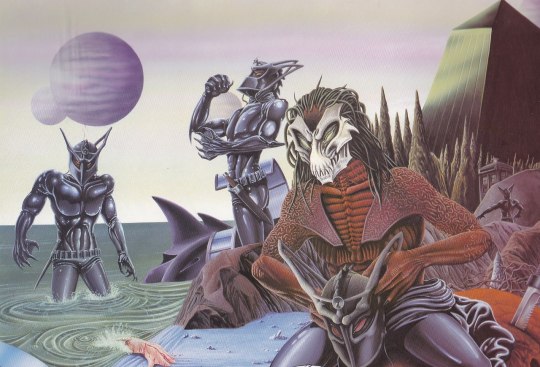

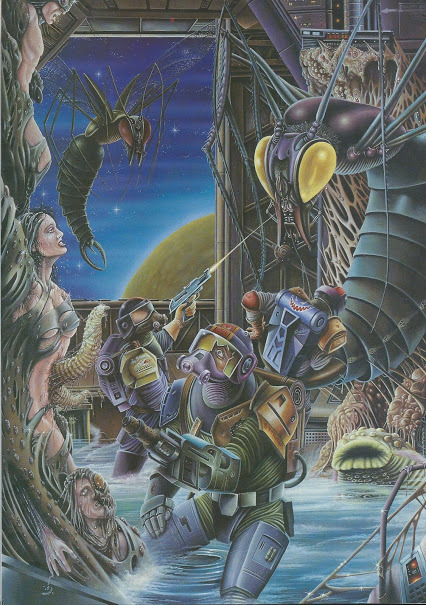

Classic Doctor Who monsters the Voord, the Silurians, the Wirrn, and the Yeti, as reimagined by Colin Howard (I believe from the 1993 calendar, but I could be mistaken).
81 notes
·
View notes
Photo
Fascinating, wish there was more info
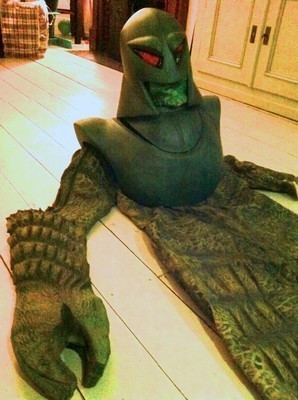
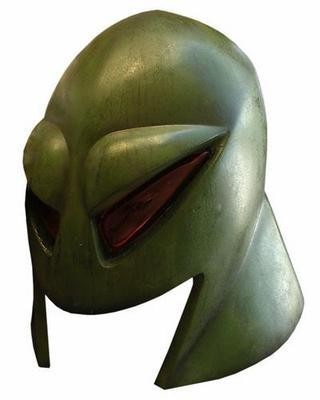
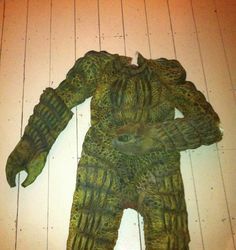






Ice Warrior: Ragnarok – The Unmade Doctor Who Spinoff Film
Hailing from fan-favorite author, the late Craig Hinton, Ice Warrior: Ragnarok was intended as a celebration for Doctor Who’s 40th anniversary. Besieged by production delays, the film went unmade.
Writing on 2019 on the GallifreyBase forum, producer and director Matt Carter gave more background on the would-be epic:
Long story short. We’d recced a Viking Village that was up for us shooting and providing us with all the costumed Viking extras and then a month before shooting arsonists burnt down the village! It was going to take a year to rebuild it, our license with the (Brian) Hayles Estate was for 18 months only and then the BBC announced that Doctor Who was coming back to TV. We were planning to have a fairly decent budget but with the return of the show proper it seemed unlikely we’d recoup the costs of making it.
It was a great project and we had Michael Jayston onboard to playing a blind priest. I’d cast everyone through my regular casting agents at the time and got some really brilliant actors. So, it was a terrible shame. We also had a whole story that revolved around the removal of an Ice Warrior helmet to reveal the lizard beneath. Sadly, Mark Gatiss finally did it, so that would seem a bit old hat now. Great script from Craig Hinton.
Plan was to shoot in Black and White and a bit of a homage to James Whale’s Frankenstein and also to help it look filmic. Would’ve been terrific fun to direct.
We redesigned the Ice Warrior’s to make them more mobile. Would’ve worked a treat, I think. Great work from Philip Robinson who designed the new Sil costume for Sil and the Devil Seeds of Arodor.
Although I did get to use his costumes as background extras on an Orange (telecommunications) shoot, I directed a few years later.

From designer Philip T. Robinson about the revamped Ice Warrior designs:
Ice Warrior and Ice Lord costumes created in 2003 for the sadly aborted Ice Warrior spin-off film. They cost £2,000 to commission and build. Built in fiberglass and foam latex, they have held up amazingly over 10 years and are still in great condition. It’s with huge regret that I have to part with these fantastic monster costumes. They come with masks and 2 full body suits.

There are several spare sets of hands and boots for each costume as well as additional thigh armor. The script for the production was written by the late Craig Hinton, author of several Doctor Who novels. It was started in 2002 and went through several drafts. The rights were obtained to film a story featuring the Ice Warriors but unfortunately the production was beset with disaster, as two weeks before filming the location was burnt down causing huge delays! Then with the announcement in 2004 that Doctor Who was to return to TV the project was aborted.
13 notes
·
View notes
Text
If this novel actually existed I would read it in public like a preacher doing a sermon. I want to live in the universe where this book existed.
This is what The War is to me now, The Book of the War and everything else obviously still counts in my head and informs my interpretation but in my heart of hearts these events are happening somewhere in the universe of The War In Heaven too and you cannot convince me otherwise.
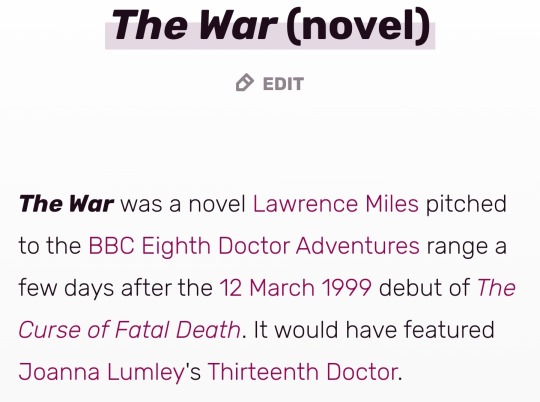

117 notes
·
View notes
Text
Eight “Lost” BBV Projects
In October 2021, I ended my association with Bill Baggs and his company, BBV Productions. So did many other people. The tale of the rise and fall of “New BBV” in 2021 is a complex and blackly comic one — and not what I’m here to discuss.
No; I just want to make a record, for posterity, of some of the BBV projects that could have been, but now won’t be. Some of these have already been discussed by their creators, in such places as the den of inequity that some call Twitter; others had never been disclosed to the public.
Strap in for eight glimpses of the Faction Paradox, P.R.O.B.E. and more that could have been! Including a special treat for #8… The very long post is under the cut. Note that many other projects must have existed — indeed, I know of a few more, which I’m keeping mum about because the odds are good that they’ll still come out in the foreseeable future… just not at BBV!

Keep reading
46 notes
·
View notes
Text
youtube
I dont know if this got around, but apparently Marq English was part of the cast for the ultimately unproduced City of the Saved audio play series, and had recorded a few videos of the cast and crew behind the scenes that he released in 2019.
22 notes
·
View notes
Photo



beta arceus! (o o) based on @lunaklim‘s beta arceus!
40K notes
·
View notes
Text
Who on Earth is Rasputin?
If you answered “the Fourth Doctor using a Chameleon Arch”, you have seen the 1971 biopic Nicholas and Alexandra and you have the sort of spirit we’re looking for. We love you, Tom Baker, we love you.

Nevertheless, while it is clearly canonical that every other part played by a given Dr Who actor represents that actor’s Doctor under a Chameleon Arch, (/s), let’s dig a little deeper, because it’s fun and we have cause to do so, into the life and history of Grigori Rasputin in the Doctor Who Universe.
1.
The PETER HARNESS Story
For those who haven’t been keeping up with the flood of great content springing from the Doctor Who: Lockdown event like slightly wobbly ambrosia from the Cornucopia, Peter Harness has released a synopsis for one of the most improbable missed opportunities of the Welsh Series: a Capaldi one-parter entitled How The Monk Got His Habit.
This story would have seen the return of the Time Meddler himself, or, as you may know him, the Monk—a positively delightful antagonist from the 1960′s who got overshadowed by the more enduring and more malevolent Master, and whose gimmick was that he was an amoral hedonist who changed history for fun and profit with no care for the consequences. In his televised appearances in the William Hartnell era, the Time Meddler was played by Peter Butterworth; first encountered posing as a monk in an 11th-century monastery, he was subsequently remembered as “the Monk”, wearing that costume, and known thereafter as “the Monk” or “the Meddling Monk” in fandom and in subsequent appearances.
Harness decided to feature an early incarnation of the character colliding out-of-sync with the Twelfth Doctor, giving nothing less than the origin story of the Meddling Monk, both the “meddling” and “monk” parts, and just from the original pitch email he dug up, it is a thing of beauty.

(Source)
Further enjoyment is to be gleaned from the fully-written-out opening scene of a hypothetical novelisation of the unmade story, which can be found here and establishes the incarnation of the Time Meddler at the start of that story (currently going by “Roger”) as being his fifth.
This is mildly interesting in that in true Doctor Who fashion, it manages to contradict one of the very few already-existing stories that had tried to make sense of the Monk’s timeline. I refer of course to John Peel’s The Mutation of Time, which took time off to establish that the already-meddling, already-monasterial Peter Butterworth incarnation seen in The Time Meddler and The Daleks’ Master Plan was the Monk’s first incarnation. But never mind that.
Note that the historical Rasputin died at the tail end of 1916. I could construct elaborate theories of how and why Rasputin turning insane in 1917 could affect the Russian Revolution and the rest of human history, but I’ll spare you and myself the additional headache, and assume this was simply a typo.
2.
The BOOK OF THE WAR Story
Where it gets complicated, as is often the case, is when you factor in the Time War. See, The Book of the War, in one of its most entertaining side-stories, establishes that Grigori Rasputin actually did not die in December 1916. Instead, Faction Paradox, those lackadaisical jackanapes, thought it would be funny to spirit him away to their hideout a few days before his death, leaving a barely-sentient clone to act out Rasputin’s real death.
Unaware of this, the Celestis (a faction of Time Lords who turned themselves into incorporeal demons to escape the Time War) had decided to recruit Rasputin in their usual faustian way, offering him a form of immortality in exchange of his accepting to be Marked by them, becoming a slave to their will. Because the Rasputin clone’s basic programming included “Do whatever freaky time travelling sorcerers are telling you to do”, the thing blithely accepted the Celestis Mark and was on its way.
And then, unaware of what the Celestis had done, but having caught wind of the Faction Paradox cultists’ plan to bring Rasputin to their homebase, the actual Gallifrey-based Time Lords decided to duplicate Rasputin themselves, leaving a “trapped” Grigori for the Faction to find, one who was secretly loyal to them, the Great Houses. And so they showed up one day before Rasputin’s death to perform the switcheroo, being under the impression that if the Faction were to whisk Rasputin away, they would do so mere instants before he was supposed to die.
(Maybe the Time Lords thought that because that’s how they would do it. For more information, see S09E12, Hell Bent.)
Hence, come the fateful day, the Time Lords’ doctored duplicate of the Faction’s doctored duplicate of Rasputin, now secretly immortal thanks to, and under the control of the Celestis, (are you still following this?)… not only does it take forever to die because duh, it’s a badly-made golem, not a human being… but once it does find it within itself to die, it is instantly resurrected by the Celestis, who activate their Mark, ordering it to do their shadowy bidding.
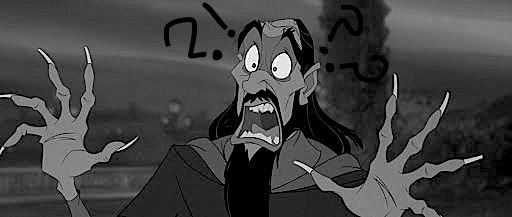
At this point, the misbegotten triple-zombie experiences an existential crisis too big for its artificial brain to handle, as what passes for its soul has now been conditioned to faithfully serve the interest of three different factions who are at war with each other. Not-Rasputin goes instantly mad with confusion and goes drown itself in the nearest river.
Meanwhile, in the members-only Faction Paradox treehouse, the original Rasputin whom the cultists replaced with the first golem is properly inducted into the Faction, where he is widely observed to turn into just as crazy a Grandfather Paradox zealot as he was a devout Orthodox and mystic. He proceeds to use his newfound authority as Father Dyavol of Faction Paradox to advise his fellow Faction member Princess Anastasia to secede from the Eleven-Day Empire and bugger off to Moscow.
After Anastasia and Dyavol’s revolution crashes and burns, his corpse is found in the river again, appearing to once more have been mutilated in more ways than it would take to kill a normal human being. The Book’s ambiguous in-universe authors are themselves unsure of quite what happened.
3.
The OTHER STUFF
Those two are the “big ones”, but I would be remiss if I did not mention other Doctor Who takes on the historical Grigori Rasputin.
Big Finish’s Companion Chronicle The Wanderer has the First Doctor, Susan, Ian and Barbara coming across the younger, wandering-pilgrim Rasputin in 1903. He briefly becomes a genuine prophet due to having come into contact with an alien artefact which grants him knowledge of future human history, but this is undone at the end of the story and so doesn’t amount to very much.
I am told that this is because the story was originally written with Nostradamus in mind, which makes a lot of sense. What is of interest to us is that Rasputin is here depicted as a basically good, sane man, once you set the grandiose prophetic visions aside.
Dave McIntee’s The Wages of Sin, on the other hand, is also constructed around Rasputin’s death in December 1916, but it posits that Rasputin was a non-supernatural and non-crazy monk, totally undeserving of his ghoulish and supernatural post-mortem reputation. Rather problematically, it gives us a direct insight into Rasputin’s thought processes as he dies, with no thought of being a triple-zombie with conflicting allegiances to be gleaned:

4.
The THEORY
What this tells us is that Rasputin’s death is not strictly a bootstrap paradox — the original historical death that the Faction fetishized to the point of wanting to get their own ritualistic mitts on Rasputin, the one the Monk accidentally averts, a few months before it’s supposed to happen, in a way that threatens to change all of human history, is not the farcical catastrophe described in The Book of the War. There was an original, untampered-with timeline that got thrown out of whack by too many different Time Lords trying to meddle with it.
You could, I suppose, posit that there are three different timelines: the Monk and the various Wartime factions both split off in different directions from the baseline Wages of Sin timeline where the human Rasputin died in the river. But that is no fun at all, is it? And furthermore, it does not account for the fact that the definitely human Rasputin of The Wanderer and The Wages of Sin is a good man unfairly maligned, whereas the Rasputin who becomes Father Dyavol is a rebellious lunatic. So let’s assume instead that the Book of the War story’s time meddling is building onto what happened (or, you know, would have happened) in How The Monk Got His Habit.
If we assume that the “the Monk drives the real Rasputin insane” incident happened a few months prior to December 1916, and it is on the day when he was driven mad that the real Rasputin is taken out of time by the Twelfth Doctor and replaced by the regenerated Monk, then this finally makes sense of the difference in characterization between pre- and post-1916 Rasputin. The sane, misunderstood Rasputin was the real human being, whereas the ranting madman Rasputin is the persona put on by the repentant Monk. Remember, per Harness’s outline, the Monk has a checklist of what Rasputin is supposed to do historically speaking, but I don’t see him having any real way of knowing how Rasputin is supposed to act. Most of his involvement with the man took place on the day that he drove him irreparably kookoo, after all.
So we end up with the following story:
The original Grigori Rasputin, who meets the First Doctor in 1903, is a mostly-sane and wholly-non-evil man. He has a traumatic experience with visions of future history, which the Doctor is forced to telepathically lock away, Donna-style. (The Wanderer)
In the original timeline witnessed by the Third Doctor, Rasputin lives out his days largely as he had begun. He is assassinated in largely-mundane circumstances; Jo’s attempt to avert this by switching out the poisoned cakes for normal ones gives rise to a legend that Rasputin was unusually hard to kill, and causes the event to go down in history. (The Wages of Sin)
The Earth band Boney M write a song about Rasputin which inspires the Fifth Monk to go back in time and make Rasputin listen to it. This drives him irreparably bananas, likely because of his having already had one barely-contained traumatic experience with future knowledge given to him by aliens, back in 1903.This screws with time to the extent that when he realizes he is out of his debt and calls for help, the Fifth Monk actually reaches the post-War Twelfth Doctor. After a lot of shenanigans, the Doctor leaves the Monk in 1916 with instructions to regenerate into a Sixth Monk physically identical to Rasputin, and then act out the part Rasputin was supposed to play in history to a T. (How The Monk Got His Habit)
The Sixth Monk’s Rasputin cosplay leaves a lot to be desired, since he mostly bases his performance on the damn Boney M song and on the bananas, post-listening-to-the-song Rasputin. Nevertheless, it’s enough to fool Faction Paradox into abducting him a few days before he was supposed to fake his death and go back to business as usual. The improbable series of coincidences which follows, with the triply-brainwashed duplicate, might represent Time trying to adjust so that the myth of Rasputin’s outlandish death, which started this entire series of events, still goes down in History somehow.
Once in the Eleven-Day Empire, the Sixth Monk realizes pretty quickly that his being there at all, in the middle of the Time War, is a perfectly irregular preach of all the Protocols of Linearity. Hoping to avoid detection, he continues hamming it up as Mad Prophet Rasputin until he figures out a plan. To his surprise, he manages to fool Anastasia, and so he manipulates her into giving him a free ticket out of the Faction, namely the whole Thirteen-Day Republic thing. (The Book of the War)
But wait. What happened to the real Rasputin who went crazy? I reckon the Twelfth Doctor took him to some place of caring or other. What’s more, I reckon he voiced his intention to do so while the Fifth Monk was still with him. (How The Monk Got His Habit)
And so the final grisly piece of the puzzle comes into place. Desperate to escape back to his own place in Gallifreyan history, where it’s safe and black-and-white, when he sees the Valentine’s Day Battle approaching, the Sixth Monk commits his first truly evil act by hopping back into his timeship unseen, bringing the real Rasputin back to the Thirteen-Day Republic, and murdering him in a way which he hopes will look like the original timeline reasserting itself. To further avoid detection in case he should be intercepted on the way out, the Sixth Monk regenerates himself into a clean-shaven Seventh Monk right there and then, probably hiding in a closet. (The Book of the War)
As far as any of the Wartime powers know, “Father Dyavol” is dead, and so the now-inconspicuous Seventh Monk is free to slink away back to his TARDIS. Knowing the Doctor is found on Earth in almost all of their incarnations, the Monk hovers close to Earth’s timeline, hoping to find the “right” Doctor again and rejoin Linearity by latching onto him. When they finally bump into each other in 1066 Northumbria, there’s still a 50-year difference between them, but the Monk thinks “eh, close enough” and reenters normal time for good, now with much-loosened moral standards. After all, act or no act, he spent quite a lot of time working with Faction Paradox — besides which he has seen that everything the Time Lords of his day stand for is torn down eventually by the War, so why bother with any of those Laws of Time he know will eventually be suspended? (The Time Meddler, The Daleks’ Master Plan)
…oh!
And if you want the real Rasputin’s story to have a happy ending, maybe the Faction, once they rifle through the possessions found on the corpse of Father Dyavol, find a fobwatch and open it… reviving the Fourth Doctor, who offers the befuddled coroner-Cousin a jelly baby, shrugs that this particular attempt to throw off the Black Guardian clearly didn’t work, and returns to his own era.
The jelly baby in question was then placed, with religious deference, on a velvet cushion inside the Catalogue.
96 notes
·
View notes
Text




Here's a closer look at the absolutely beautiful TARDIS console room from Sunday's episode!
1K notes
·
View notes
Text
3 for 2 Black Archives!
Electronic books, available for immediate download rather than messy post are a quick, easy and hassle free alternative to paperbacks at the moment!
To make things a little cheaper, we’ve created a code that lets you do a 3 for 2 on all our award winning Black and Silver Archives – buy three electronic copies of titles from either or both ranges and enter this code
9V3CVNOTA
to get one of the three books free!
3 notes
·
View notes
Photo

“The other is a disheveled wraith, frumpled violet robes, and tattered remnants of House regalia. His mask is his own skull, the shadow that serves as his skin peeled back just enough to show the red-stained bone. His eyes, wide and shrivelled, look like golf balls.“
A small personal project I worked on in my spare time (And to bolster my design portfolio). Godfather Auteur, who features in A Bloody and Public Domain (Book of the Enemy) & Going Once, Going Twice (Book of the Peace), both by @rassilon-imprimatur . My two biggest influences for the design came from the Skeksis (Mostly the Chamberlain) and a rather abstract self portrait by Paul McCartney (Hence his lopsided jaw).
Also the Circular writing on his collar is meant to read "Astrolabus, One of the First to Map History, and the Pyhagoran writing on his sleeves translates to "Godfather Auteur, Author of the Spiral Politic”.
[VISUAL DESCRIPTION: A character sheet featuring a skeletal hunched-over figure clad in ragged dull robes. Dark shadow spills out the eye sockets and nose hole to form lips set in a wide smug grin. In his hand is a small feathered quill. Alongside the figure are two sketches showing the figure, one with a irritable frown and another with a raised brow in thoughtfulness.]
47 notes
·
View notes
Text
Thirteen’s thoughts while falling to Sheffield carry the exact same energy as the Eighth falling from the Ice Warrior warship in Lance Parkin’s The Dying Days.



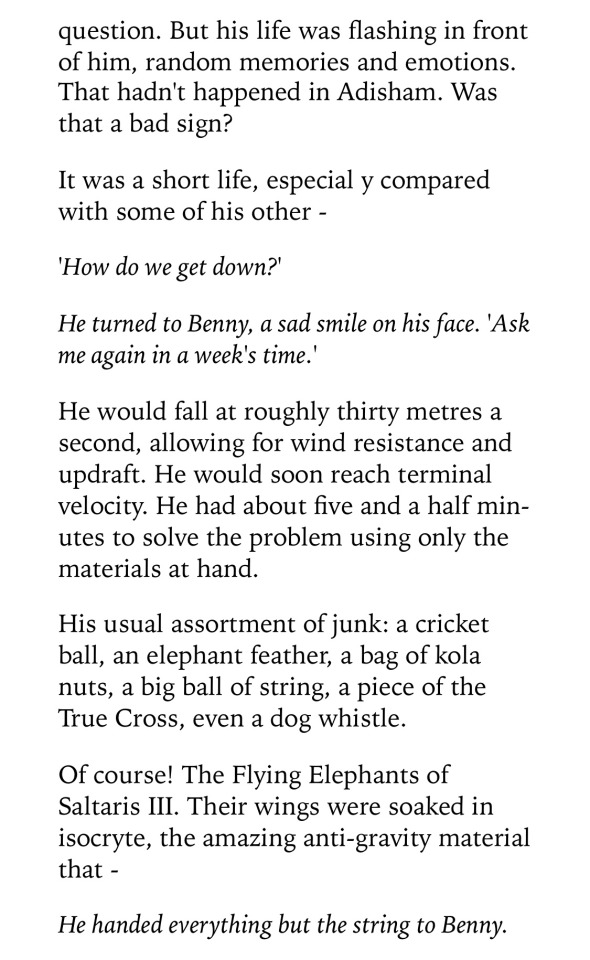
(Chris Chibnall’s “Things She Thought While Falling,” set inbetween Twice Upon a Time and The Woman Who Fell to Earth, can be found here! It’s really lovely!)
39 notes
·
View notes
Text


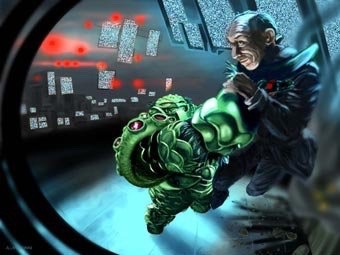
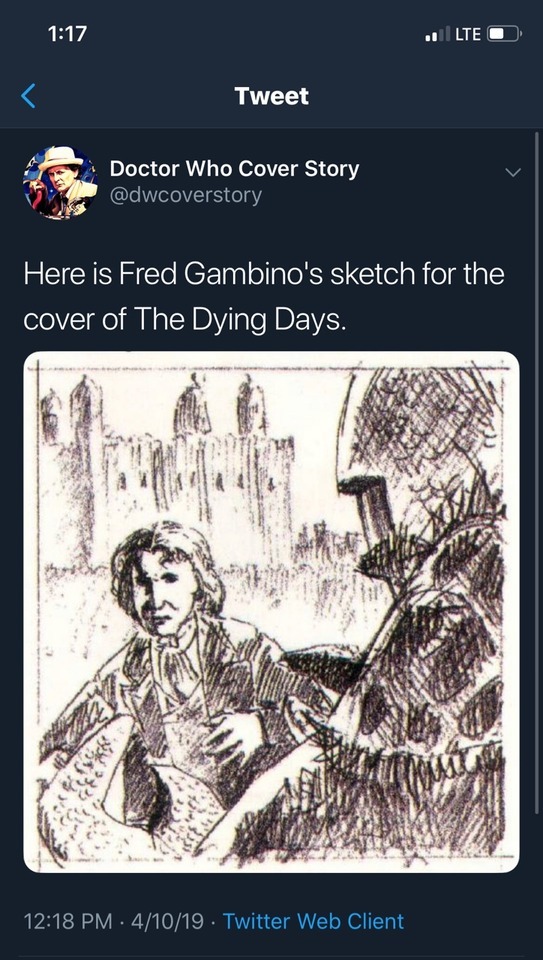
I’ve never actually seen these Allan Bednar illustrations for The Dying Days before! Fred Bambino’s original cover concept as an extra treat!
42 notes
·
View notes
Photo
This image got left of accidentally More drudges
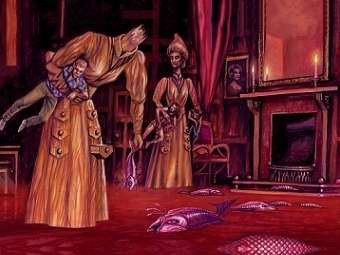

Years ago the book Lungbarrow was released online on the bbc classic dr who website, (as well as being a directors cut) artwork was produced for the story. Sadly the bbc since removed it from the site and only some of the images were archived on backups of the web page.
So a while back I scoured the internet for every image I could find (which had been saved on random fan sites and elsewhere) as the copies of most of the images which were in the pdf (which had been available for download from the bbc site) were quite low resolution. While doing so I compared the images which had been archived on the bbc site (and a few cropped down versions of some images I could not find a full version of) to their lower resolution equivalents in the pdf.
I found to my surprise some of the images depicting the same scene were completely different! (some had a face and some other details redone, with most other element roughly the same while others were whole different pictures)
All of what Imanged when I did this several years I saved (which is good as some of the sites with some of the image fragments have now gone) and as it came up in a conversation I was able to find them here they all are. Enjoy.
(Note as I said some the images are cropped down, or have had something saved on top of parts of them. I am posting these versions as they are higher resolution than the complete lower res version I am posting as well)






There are people on standing on the tiled floor but the resolution
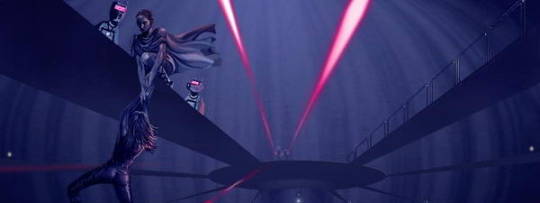


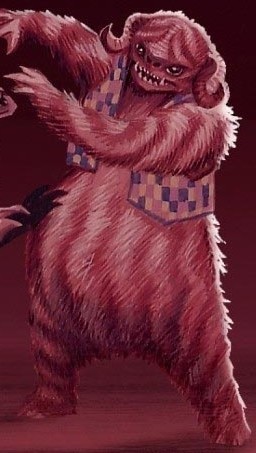
The rest of this image of badger fighting is missing
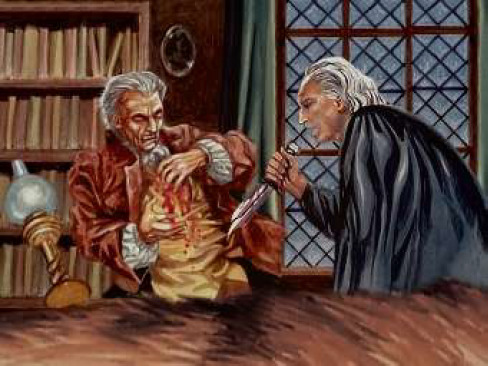


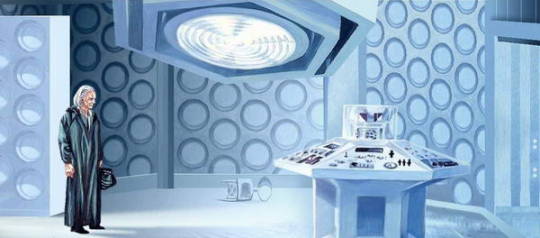
(note the artist has since redone this image but I am not including that version here as It was created after the fact)

Someone (no spoilers) tries not to fall from the balcony
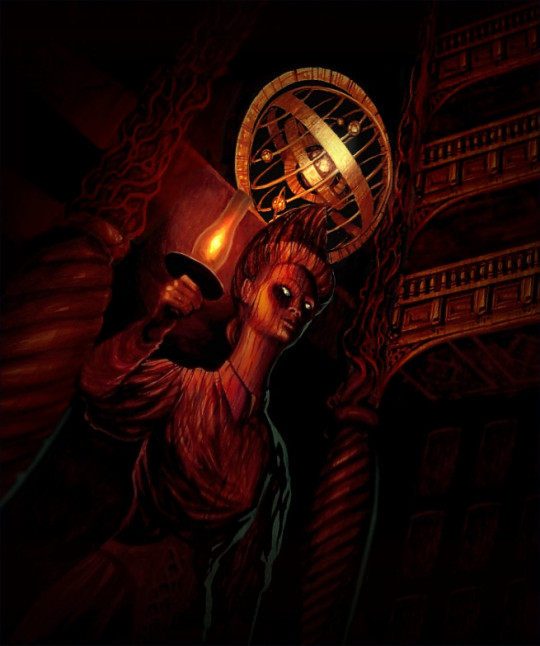
It’s raining fish - Hallelujah!
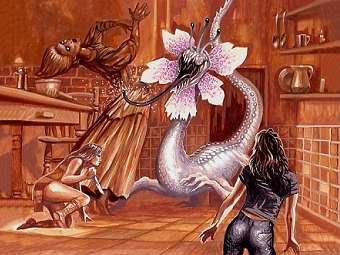
lungbarrow Orchid Lizard attacks

The Doctor shields Quences’ body from the Drudges





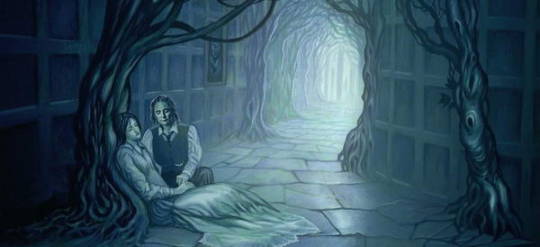
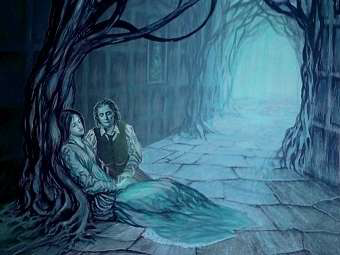

Gallifrey distant past (in the others time)

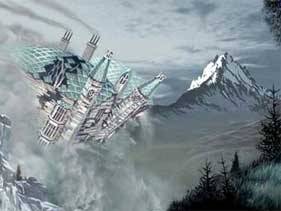
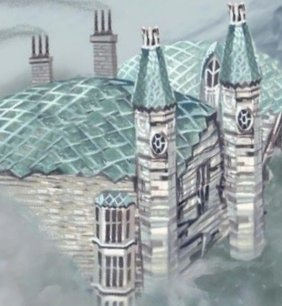
Someone edited attempt to show an intact lungbarrow included as its higher quality than other images
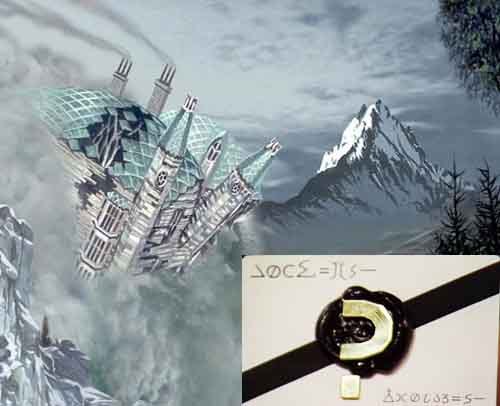


A textless version of the cover and a piece o art work done for the doctor who magazine at a different time
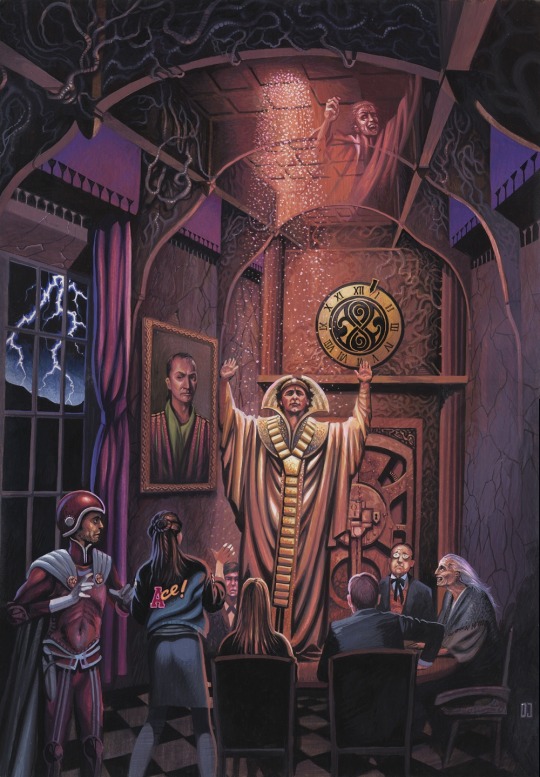
323 notes
·
View notes
Photo

The best quality I can find of the artwork for the dyeing days ebook






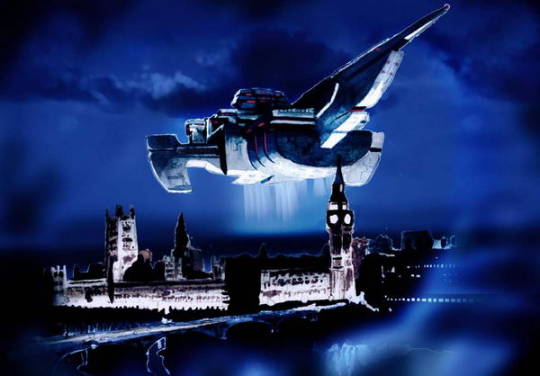


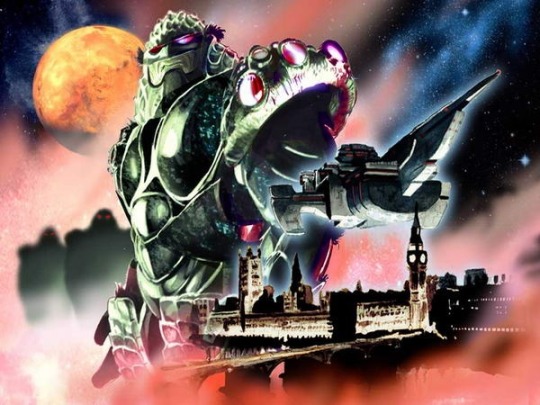
42 notes
·
View notes
Photo

Years ago the book Lungbarrow was released online on the bbc classic dr who website, (as well as being a directors cut) artwork was produced for the story. Sadly the bbc since removed it from the site and only some of the images were archived on backups of the web page.
So a while back I scoured the internet for every image I could find (which had been saved on random fan sites and elsewhere) as the copies of most of the images which were in the pdf (which had been available for download from the bbc site) were quite low resolution. While doing so I compared the images which had been archived on the bbc site (and a few cropped down versions of some images I could not find a full version of) to their lower resolution equivalents in the pdf.
I found to my surprise some of the images depicting the same scene were completely different! (some had a face and some other details redone, with most other element roughly the same while others were whole different pictures)
All of what Imanged when I did this several years I saved (which is good as some of the sites with some of the image fragments have now gone) and as it came up in a conversation I was able to find them here they all are. Enjoy.
(Note as I said some the images are cropped down, or have had something saved on top of parts of them. I am posting these versions as they are higher resolution than the complete lower res version I am posting as well)






There are people on standing on the tiled floor but the resolution




The rest of this image of badger fighting is missing




(note the artist has since redone this image but I am not including that version here as It was created after the fact)

Someone (no spoilers) tries not to fall from the balcony

It's raining fish - Hallelujah!

lungbarrow Orchid Lizard attacks

The Doctor shields Quences' body from the Drudges








Gallifrey distant past (in the others time)



Someone edited attempt to show an intact lungbarrow included as its higher quality than other images



A textless version of the cover and a piece o art work done for the doctor who magazine at a different time

323 notes
·
View notes
